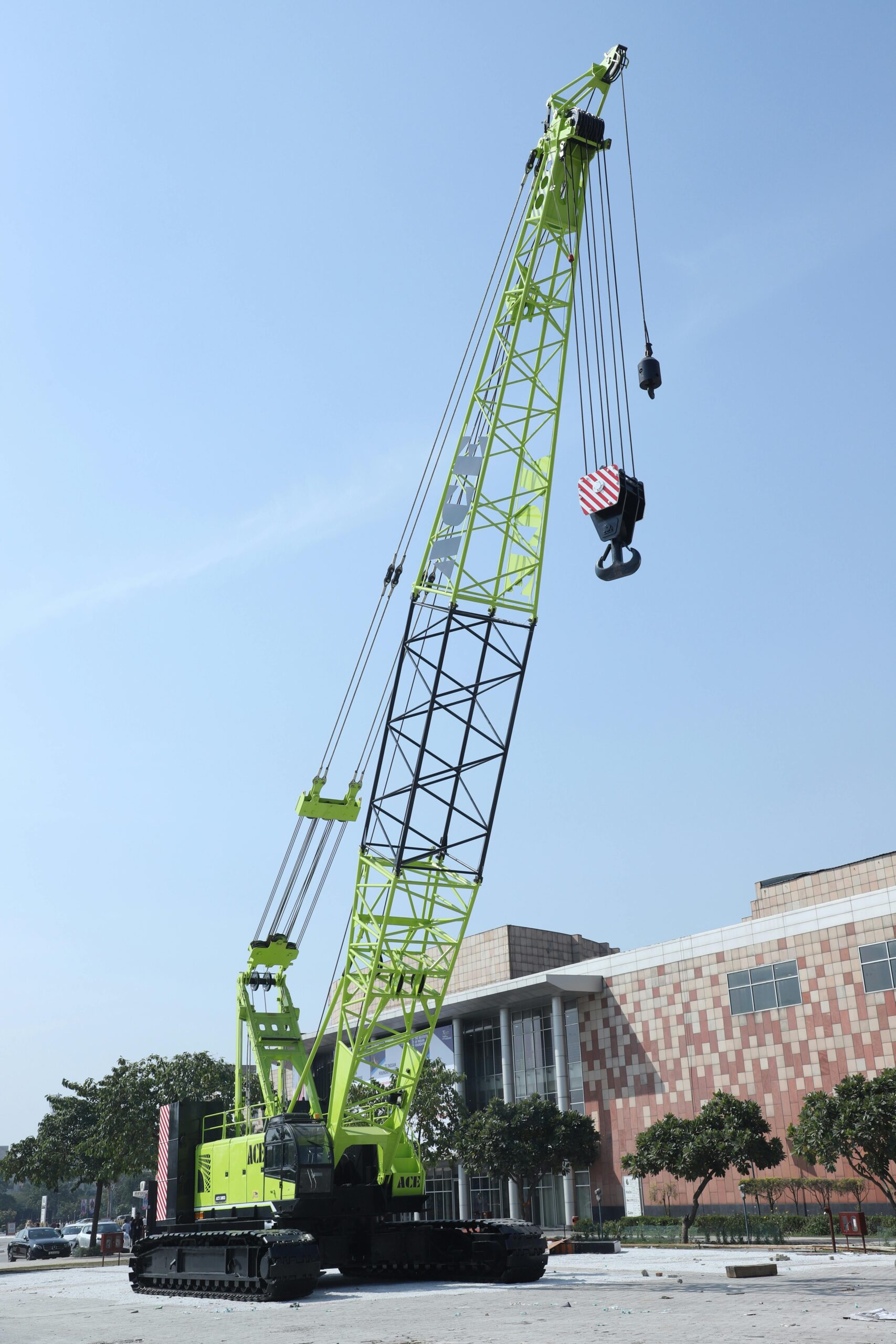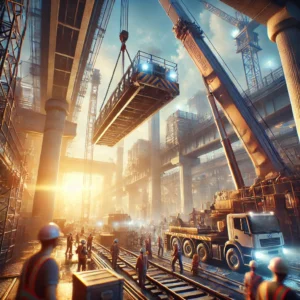How Automation Enhances Crane Safety & Efficiency

The construction and industrial sectors are rapidly evolving with the integration of automation in crane operations. Automated cranes are revolutionizing how heavy lifting is performed, making job sites safer and more efficient. Traditional crane operations come with risks such as human error, accidents, and inefficiencies in load handling. By implementing advanced technologies like Artificial Intelligence (AI), Internet of Things (IoT), and robotics, the industry is seeing a significant transformation.
The Role of Automation in Crane Operations
Automation in crane operations refers to the use of intelligent systems, sensors, and AI-driven mechanisms to perform lifting, positioning, and transportation tasks with minimal human intervention. Some key components of automated cranes include:
- AI-powered control systems for real-time decision-making.
- IoT-enabled monitoring for predictive maintenance.
- Remote control and autonomous operation for increased safety.
- Machine learning algorithms to optimize movement and positioning.
By leveraging these technologies, cranes can operate with greater precision, reducing the likelihood of accidents and improving overall efficiency.
How Automation Enhances Safety in Crane Operations
1. Reduction in Human Error
Human error is one of the leading causes of crane-related accidents. Automation minimizes risks by:
- Ensuring precise load handling with AI-driven controls.
- Reducing manual intervention through autonomous operations.
- Utilizing fail-safe mechanisms to prevent unexpected errors.
2. Remote-Controlled Operations for Hazardous Environments
With automated cranes, operators can control the machinery from a safe distance, eliminating exposure to:
- High-risk zones such as chemical plants and nuclear sites.
- Extreme weather conditions.
- Areas prone to structural collapse.
3. Predictive Maintenance with IoT Integration
IoT-enabled cranes continuously monitor their own condition and send alerts for maintenance before failures occur. This helps in:
- Preventing sudden breakdowns that could lead to accidents.
- Reducing downtime and ensuring smooth workflow.
- Extending crane lifespan with timely servicing.
4. Collision Avoidance Systems
Advanced sensors and AI-driven cameras detect obstacles and prevent crashes by:
- Automatically stopping operations when objects or workers are detected.
- Adjusting crane movements to avoid structural collisions.
- Providing real-time visual feedback to operators.
5. AI-Based Load Monitoring
Automated cranes analyze weight distribution and adjust load positioning accordingly. This prevents:
- Overloading, which could cause tipping.
- Swinging loads that may injure workers.
- Structural stress on the crane itself.
How Automation Increases Efficiency in Crane Operations
1. Faster and More Precise Movements
AI-driven automation enables cranes to lift and position loads with high precision, reducing:
- Manual adjustments that slow down operations.
- Load shifting and unstable lifting, which require repositioning.
2. Optimized Workflow with Machine Learning
Machine learning algorithms analyze past crane movements and suggest the most efficient lifting patterns. This results in:
- Shorter cycle times for loading and unloading.
- Better coordination with other automated machinery.
3. Reduced Downtime and Maintenance Costs
With predictive maintenance, downtime is significantly reduced. Automated diagnostic systems help in:
- Identifying minor issues before they become major problems.
- Reducing maintenance costs through early interventions.
- Minimizing delays in critical projects.
4. Integration with Smart Construction Sites
Automated cranes can communicate with other smart equipment on-site, leading to:
- Synchronized operations, reducing idle time.
- Automated reporting, tracking performance and productivity.
- Improved resource management, optimizing crane utilization.
Case Studies: Real-World Applications of Automated Cranes
Case Study 1: The Burj Khalifa Construction (Dubai, UAE)
The construction of the world’s tallest building, the Burj Khalifa, required advanced automated cranes to complete the project efficiently and safely. The implementation of automated tower cranes resulted in:
- 30% faster lifting operations than manual methods.
- Reduced worker fatigue, as automation handled repetitive tasks.
- Minimized accidents, with AI-assisted load balancing.

Case Study 2: The Port of Rotterdam (Netherlands)
The Port of Rotterdam, one of the busiest ports globally, has successfully deployed automated container cranes. These cranes use AI and remote control technology to:
- Handle over 20% more containers per hour compared to manual cranes.
- Reduce operational costs by 25%, enhancing profitability.
- Ensure zero human injuries since manual lifting operations were eliminated.
Case Study 3: Automated Cranes in the Automotive Industry
A leading automotive manufacturer implemented robotic gantry cranes in their assembly plants to automate material handling. The results included:
- 50% improvement in assembly line speed.
- Drastic reduction in material damage due to precision handling.
- Seamless integration with production robots, enhancing overall efficiency.
Future Trends in Automated Crane Technology
1. AI-Powered Autonomous Cranes
The next step in automation is fully autonomous cranes that learn and adapt to different project needs. These cranes will:
- Make real-time adjustments based on environmental conditions.
- Operate without human intervention using AI algorithms.
- Improve safety with self-correcting mechanisms.
2. 5G-Enabled Remote Crane Operations
With the implementation of 5G technology, remote-controlled cranes will operate with ultra-low latency, allowing for:
- Instant response times to operator commands.
- Seamless integration with AI and IoT platforms.
- High-definition visual feedback for better control.
3. Green and Energy-Efficient Cranes
Sustainability is a major focus, and electric and hybrid cranes are becoming the norm. These cranes offer:
- Lower carbon emissions, supporting eco-friendly initiatives.
- Energy-efficient performance, reducing operational costs.
- Quiet operation, making them ideal for urban construction projects.
Conclusion: The Future of Crane Operations is Automated
Automation in crane operations is not just an innovation—it’s a necessity. With AI-driven controls, IoT monitoring, and machine learning optimizations, automated cranes are making construction sites safer and more efficient. The industry is witnessing reduced accidents, faster lifting operations, and lower operational costs.
Companies investing in automated cranes today are setting themselves up for a smarter, more efficient, and safer future. As technology advances, we can expect even greater levels of automation that will redefine how heavy lifting is performed worldwide.
For the latest updates on automated crane technology and smart lifting solutions, visit CraneKart.
